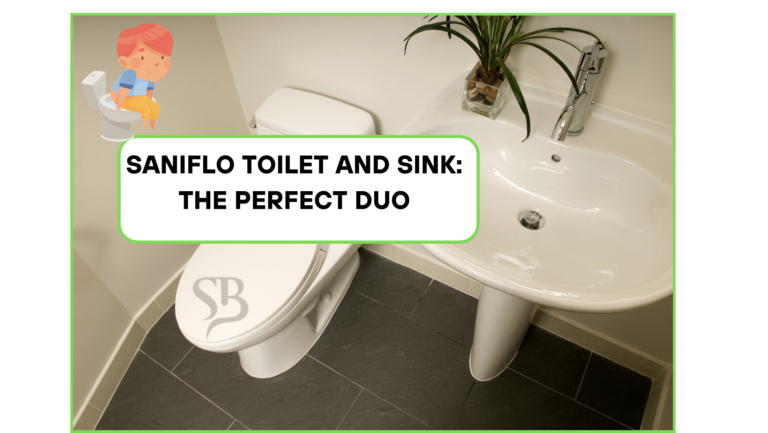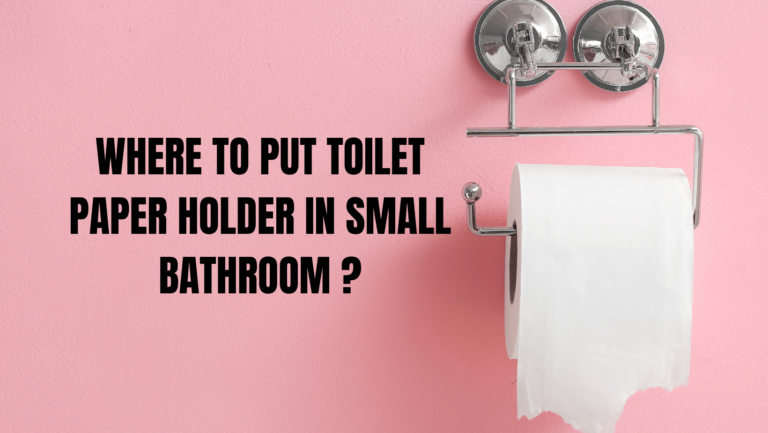Picture this: you’re in your bathroom, having just completed your morning routine. You’re about to hit the flush button, but then a sudden hesitation grips you – is flushing while sitting on the toilet safe? This seemingly mundane question has sparked debates and discussions in households worldwide.
Flushing while sitting on the toilet is generally safe for most people and is a common practice. Modern toilets are designed to handle this without posing any immediate health risks. However, it’s essential to be aware of potential risks related to the aerosolization of bacteria and germs during the flushing process.
When you flush, tiny water droplets and particles can be propelled into the air, potentially carrying bacteria from the toilet bowl. To minimize this risk, it’s advisable to close the toilet lid before flushing, if possible. You should also practice good hygiene by washing your hands thoroughly after using the toilet. Individuals with weakened immune systems or specific health concerns should exercise extra caution and may want to avoid flushing while sitting.
Importance of Toilet Flushing Safety
In the grand tapestry of human existence, the bathroom holds a special place. It’s where we find solace, reflect upon the day, and engage in some profoundly personal activities. Yet, amidst the comfort of our porcelain thrones, a web of questions and uncertainties exists. One such question is the safety of flushing while sitting. Beyond mere curiosity, it’s a matter of health and well-being. Ensuring that our bathroom habits align with hygienic practices is paramount, and this article aims to demystify the subject while providing a hearty dose of insight and humor.

The Flushing Process: How Toilets Work
Every time we hit that flush button, a symphony of mechanical wonders ensues. Imagine the toilet as a grand conductor, orchestrating a performance with various instruments. The tank holds the water, acting as a reservoir of liquid power. Beneath the lid, a labyrinth of levers, gaskets, and valves stands ready to bring forth the flushing spectacle. The bowl, the stage for this aquatic ballet, awaits its cleansing torrent.
Understanding the flushing mechanism isn’t just about quenching our curiosity; it’s about preserving hygiene. The proper expulsion of waste is essential to prevent the build-up of unwanted guests – bacteria and unpleasant odors. With a nod to both engineering marvels and biological realities, we recognize that flushing isn’t just about maintaining a tidy bathroom; it’s about safeguarding our health.
Common Concerns About Flushing While Sitting
As we confront the daunting question of whether to flush while seated, one concern looms large: the dreaded splash. The thought of contaminants splashing onto our nether regions is enough to send shivers down anyone’s spine. After all, who wants to exit the bathroom feeling like they’ve weathered a watery storm?
Yet, fear not, for toilet design has evolved to address this very concern. The contours of the bowl and the strategic release of water during flushing have been meticulously engineered to minimize splashing. While it’s true that a microscopic mist may be liberated into the air, the chances of an impromptu water dance are considerably lower than our worst-case scenarios conjure.
Expert Insights: Health and Hygiene Aspects
Navigating the treacherous waters of toilet hygiene might seem daunting, but experts assure us that the risks are relatively low. While the concept of toilet plume – those airborne droplets released during flushing – might seem alarming, it’s essential to view it through a scientific lens. In reality, the likelihood of these droplets containing harmful bacteria in a residential setting is rather slim.
For the cautious among us, implementing a few simple practices can offer additional peace of mind. The first step is the noble act of closing the toilet lid before pressing the flush button. This action acts as a powerful barrier, effectively containing any potential plume. Once the deed is done, post-toilet hygiene is of paramount importance. Thorough handwashing with soap and water for at least 20 seconds is the gold standard. And if soap isn’t available, a pocket-sized hand sanitizer can be your hygiene superhero.

Impact of Toilet Design on Safety
Toilet designs are as diverse as the individuals who use them. Standard models have stood the test of time, while high-efficiency counterparts strive to conserve water and energy. The real question, however, is how these designs impact our safety.
High-efficiency toilets, though equipped with less water for flushing, are engineered to ensure efficient cleaning. They might raise an eyebrow or two, but their design isn’t about compromising cleanliness; it’s about embracing innovation. Standard toilets, armed with adequate water pressure and flushing power, remain steadfast contenders in the quest for a clean flush.
For those ready to take the plunge into the world of advanced bathroom technology, bidets offer a luxurious and eco-friendly alternative. Beyond reducing the need for toilet paper (a win for both trees and wallets), bidets provide a thorough clean that traditional methods might struggle to match. And for those yearning for the ultimate in convenience, self-cleaning toilets emerge as a beacon of hope, making the tedious task of toilet scrubbing a thing of the past.
Scientific Studies and Findings
The quest for knowledge wouldn’t be complete without a detour into the realm of scientific studies. Researchers have bravely ventured into the world of toilet plume, studying the mysterious dance of microscopic droplets. While studies do confirm the release of these droplets during flushing, the potential for harmful bacterial transmission remains relatively low.
However, it’s essential to approach scientific findings with a discerning eye. Often, the conditions under which studies are conducted don’t precisely mirror real-world bathroom situations. It’s important to avoid succumbing to sensationalism, and instead, embrace a balanced perspective informed by evidence.

Best Practices for Flushing While Sitting
As we tread the path of prudent flushing practices, let’s acquaint ourselves with the art of safe sitting-flushing. Our first ally in this journey is the humble toilet lid. When lowered before flushing, it acts as a guardian, preventing the potential plume from making its great escape. A simple gesture with significant impact.
But let’s not forget the importance of positioning. When seated on the throne, scooting towards the back of the seat ensures minimal splashing. It’s all about finding that Goldilocks zone – not too close to the front, not too close to the back.
Post-flush, it’s time for the hygiene hustle. Handwashing takes center stage, and soap and water become your dynamic duo. Twenty seconds of lathering, rinsing, and humming your favorite tune, and you’re good to go. If soap isn’t an option, a dollop of hand sanitizer can save the day. After all, hygiene is a team effort.
Myth vs. Reality: Dispelling Misconceptions
In the realm of bathroom lore, myths abound like confetti after a celebration. One of these myths claims that flushing while sitting is akin to inviting bacteria for a ride. However, science and reason invite us to take a step back. Toilet design and engineering have evolved to minimize risks, and the likelihood of bacterial transmission is considerably lower than urban legends might suggest.
The key to unraveling myths lies in the quest for accurate information. Armed with knowledge, we can dispel misconceptions and make informed decisions about our bathroom habits. It’s not about living in fear but about understanding the truth behind the tales.
Conclusion: A Flushing Victory!
As our adventure through the world of toilet flushing safety draws to a close, we can reflect on the enlightening journey we’ve undertaken. From unraveling the mechanics of flushing to confronting our fears and embracing scientific insights, we’ve journeyed through uncharted waters armed with curiosity and humor.
So, is flushing while sitting on the toilet safe? The resounding answer is yes. In the grand scheme of things, the bathroom isn’t a battleground of invisible adversaries; it’s a space for personal care and hygiene. Equipped with knowledge, a dash of humor, and a commitment to responsible habits, we can confidently approach the porcelain throne, knowing that we’re navigating its waters with wisdom and awareness. So, with lid down and spirits high, let’s flush away our concerns and embrace a future of informed hygiene practices.







